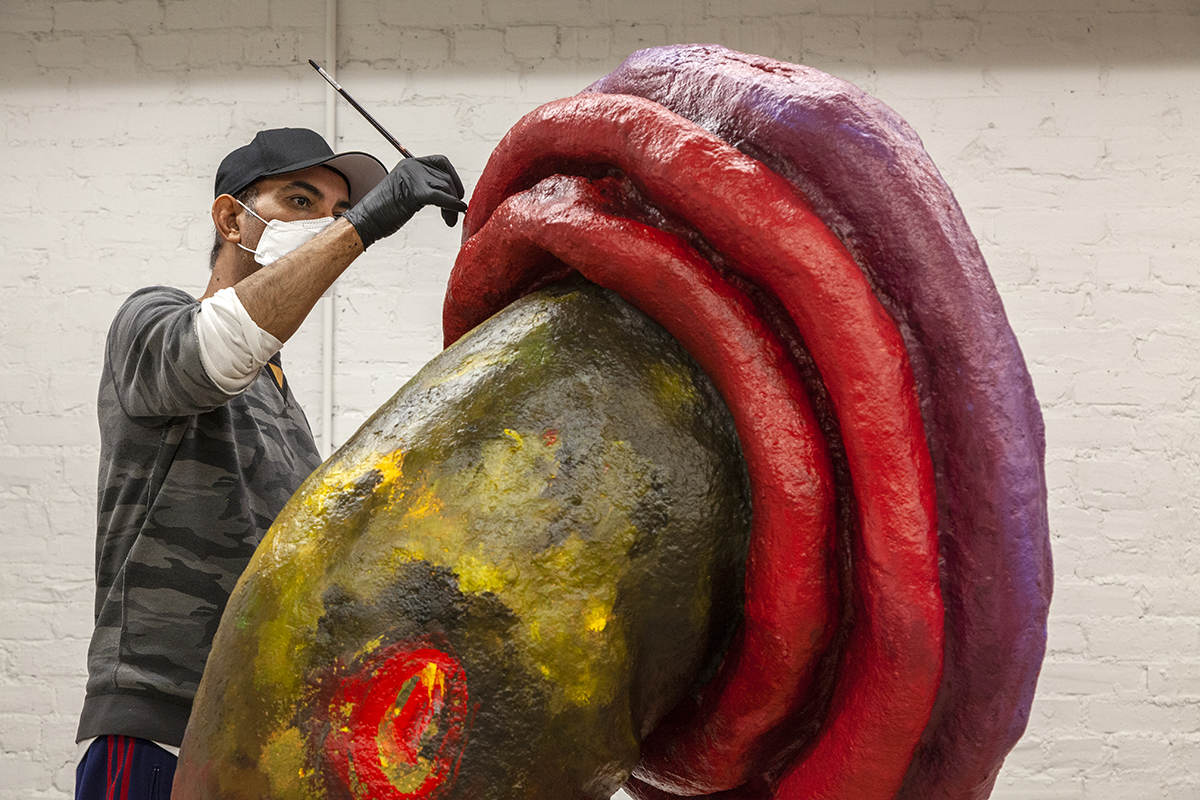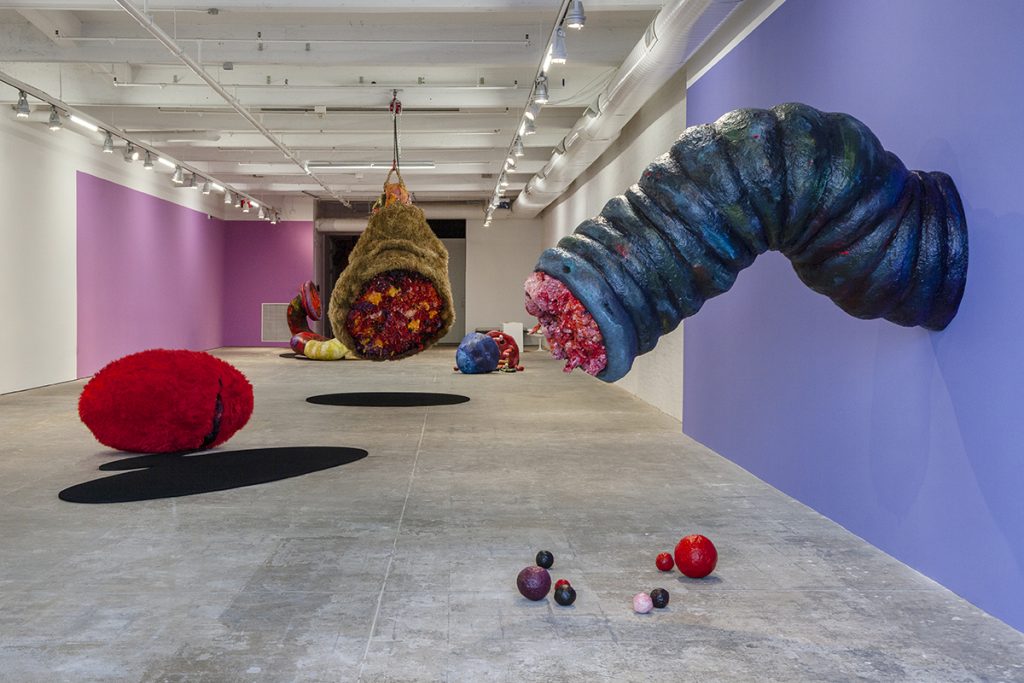Ahmed Alsoudani communicates themes of humanity, strife, and conflict in his vibrant paintings. Born and raised in Iraq, Alsoudani immigrated to the United States in the late-1990s, where he later studied painting and received an MFA from the Yale School of Art (2008). Alsoudani’s surreal paintings have garnered attention for their dream-like quality that incorporate architectural remnants, body parts, and turbulent yet unidentifiable forms that move across the canvas.
Using his FWM residency as an opportunity to experiment, Alsoudani worked with FWM studio staff to explore sculpture. This process began with Alsoudani’s sketches and the forms often found in his paintings—concepts which FWM staff developed into digital renderings that were refined until ready for fabrication. With new large-scale forms fashioned from welded and plastered armatures, Alsoudani painted their surfaces to translate his gestural visions onto three-dimensional surfaces.
The residency’s resulting exhibition Bitter Fruit consisted of five large-scale biomorphic sculptural forms exploring ideas of estrangement and how witnessing and experiencing trauma can manifest in the body. The title of the exhibition takes inspiration from Abel Meeropol’s 1937 poem of the same name, which was later recorded as the song “Strange Fruit” by Billie Holiday. Seemingly emerging from the museum building itself, these wounded forms appeared no longer suppressed and instead made visible for their viewers to contend with. Alsoudani reflected that his residency provided the opportunity to create and experience the forms of his paintings in real space and would impact his approach to future paintings.

